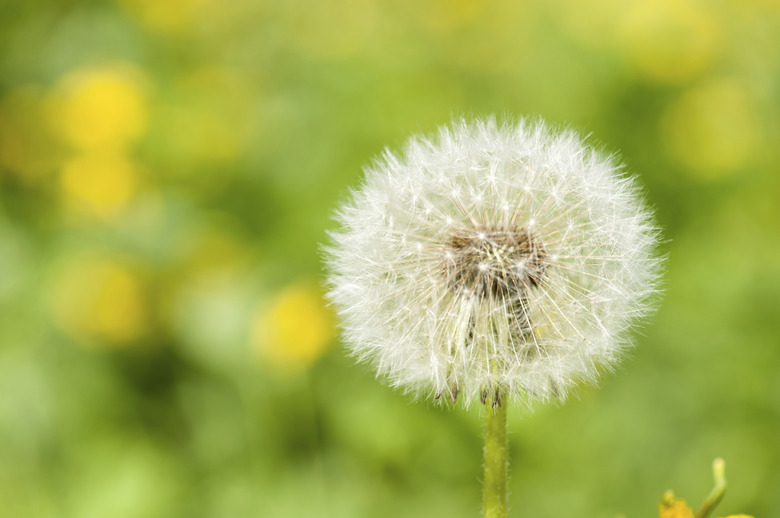Characteristics Of Wind Pollinated Flowers
Many plants are pollinated by bees, birds or other animals, but not all flowering plants rely on other organisms to carry pollen from one flower to another. Approximately 20 percent of flowering plants are wind-pollinated.
Features and Appearance
Wind-pollinated plants don't depend on the ability to attract birds or insects, so their flowers tend to be small, drab, unscented and inconspicuous. Anthers (structures where pollen is produced) and stigmata (structures where the pollen will land) often project from the flower in order to be exposed to the wind.
The Sneeze Factor
Pollen produced by a wind-pollinated plant is — quite literally — blown on the wind, so much of it will land in places where it will do no good. Consequently, wind-pollinated plants need to produce large amounts of pollen. For people with pollen allergies, the considerable quantities of pollen produced by some wind-pollinated plants can be a vexing problem.
- Many plants are pollinated by bees, birds or other animals, but not all flowering plants rely on other organisms to carry pollen from one flower to another.
- Wind-pollinated plants don't depend on the ability to attract birds or insects, so their flowers tend to be small, drab, unscented and inconspicuous.
Other Wind-Dependent Species
Trees and grasses in temperate regions are often wind-pollinated. Trees in this category typically flower in early spring before their leaves arrive to ensure the leaves do not block the breeze and prevent pollination.
Characteristics Of Hummingbird-pollinated Flowers
Hummingbird-pollinated flowers appear in warm colors like red, yellow and orange. Flowers visited by hummingbirds tend to be scentless or have very mild odors. Because these plants are attracting birds with a poor sense of smell, scent is not vital. Strong perfume in plants is designed to announce the presence of nectar to insect pollinators, but since hummingbird-pollinated plants don't benefit from insect visits, this extra step would be useless. The most distinctive feature of a hummingbird-pollinated flower is its shape. These flowers often droop or hang pendulously and have modified petals that accommodate the hovering feeding activity of the bird. Hummingbird-pollinated flowers tend to have significantly more pollen than insect-pollinated flowers.
- Trees and grasses in temperate regions are often wind-pollinated.
- Strong perfume in plants is designed to announce the presence of nectar to insect pollinators, but since hummingbird-pollinated plants don't benefit from insect visits, this extra step would be useless.
References
- "Biology"; Neil A. Campbell, Jane B. Reece, Lisa A. Urry, Michael L. Cain, Peter V. Minorsky, Steven A. Wasserman, Robert B. Jackson; 2008.
- California State University, Northridge: Pollen Transfer by Hummingbirds and Bumblebes, and the Divergence of Pollination Modes in Penstemon
- University of Maryland: Pollination
- University of Miami: Exploring the Boundary Between Pollination Syndromes: Bats and Hummingbirds as Pollinators of Burmeistera Cyclostigmata and B. Tenuiflora
- California State University Northridge: 'Anti-bee' and 'Pro-bird' Changes During the Evolution of Hummingbird Pollination in Penstemon Flowers
- University of Minnesota: Pollination
- Washington State University Extension: Partners in Pollination
- Smithsonia Institute: Flower Color, Hummingbird Pollination, and Habitat Irradiance in Four Neotropical Forests
